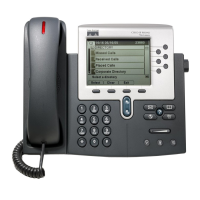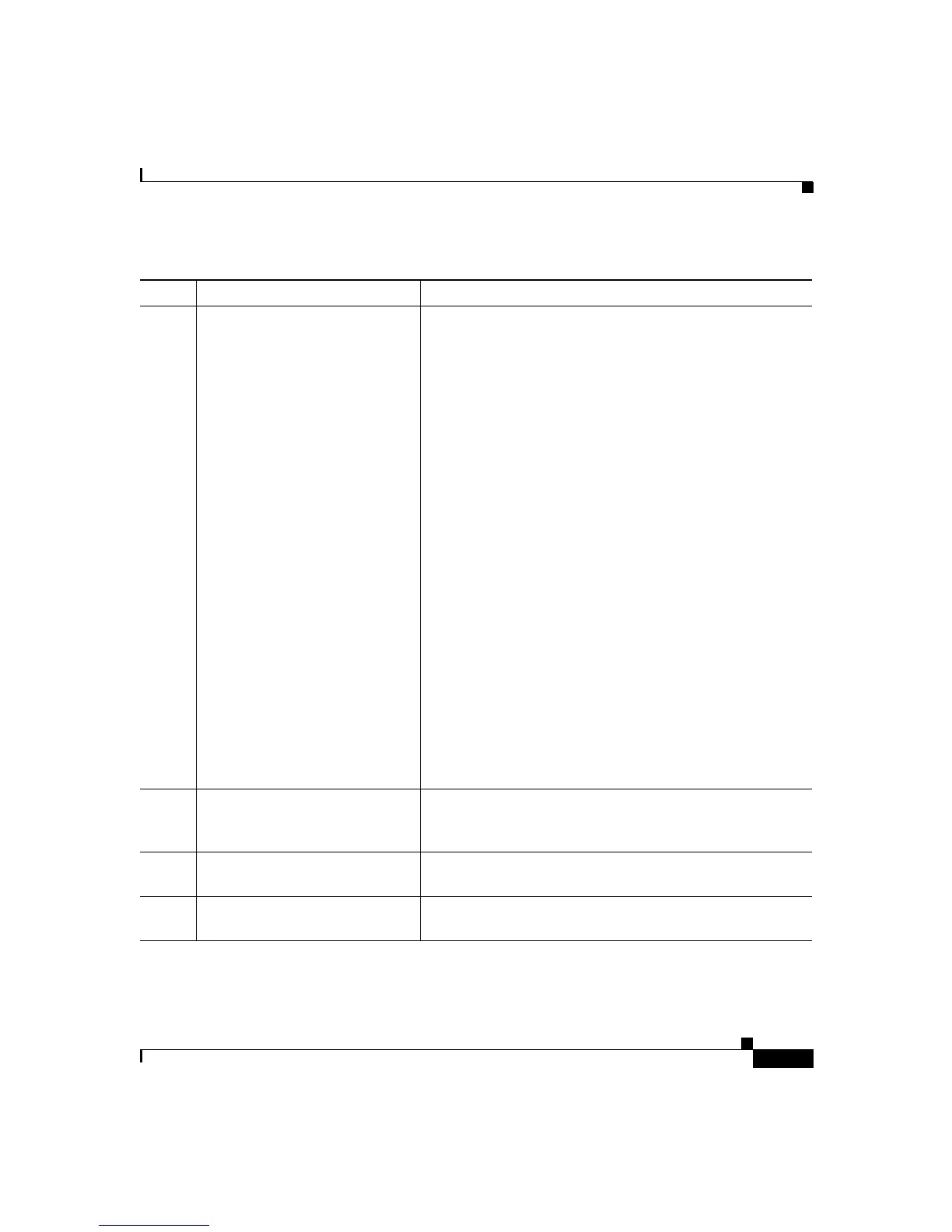B-71
Cisco SIP IP Phone 7960 Administrator Guide
78-10497-02
Appendix B SIP Call Flows
Call Flow Scenarios for Failed Calls
Step Action Description
1
INVITE—Cisco SIP IP phone A
to SIP proxy server
Cisco SIP IP phone A sends a SIP INVITE request to the
SIP proxy server. The INVITE request is an invitation to
User B to participate in a call session.
In the INVITE request:
•
The phone number of User B is inserted in the
Request-URI field in the form of a SIP URL. The SIP
URL identifies the address of User B and takes a form
similar to an email address (user@host where user is
the telephone number and host is either a domain name
or a numeric network address). For example, the
Request-URI field in the INVITE request to User B
appears as “INVITE sip:555-0002@companyb.com;
user=phone.” The “user=phone” parameter
distinquishes that the Request-URI address is a
telephone number rather than a user name.
•
Cisco SIP IP phone A is identified as the call session
initiator in the From field.
•
A unique numeric identifier is assigned to the call and
is inserted in the Call-ID field.
•
The transaction number within a single call leg is
identified in the CSeq field.
•
The media capability User A is ready to receive is
specified.
2
407 Authentication Error—SIP
proxy server to Cisco SIP IP
phone A
SIP proxy server sends a SIP 407 Authentication Error
response to Cisco SIP IP phone A.
3
ACK—Cisco SIP IP phone A to
SIP proxy server
Cisco SIP IP phone A sends a SIP ACK to the SIP proxy
server acknowledging the 407 error message.
4
Resend INVITE—Cisco SIP IP
phone A to SIP proxy server
Cisco SIP IP phone A resends a SIP INVITE to the SIP
proxy server with authentication credentials.

